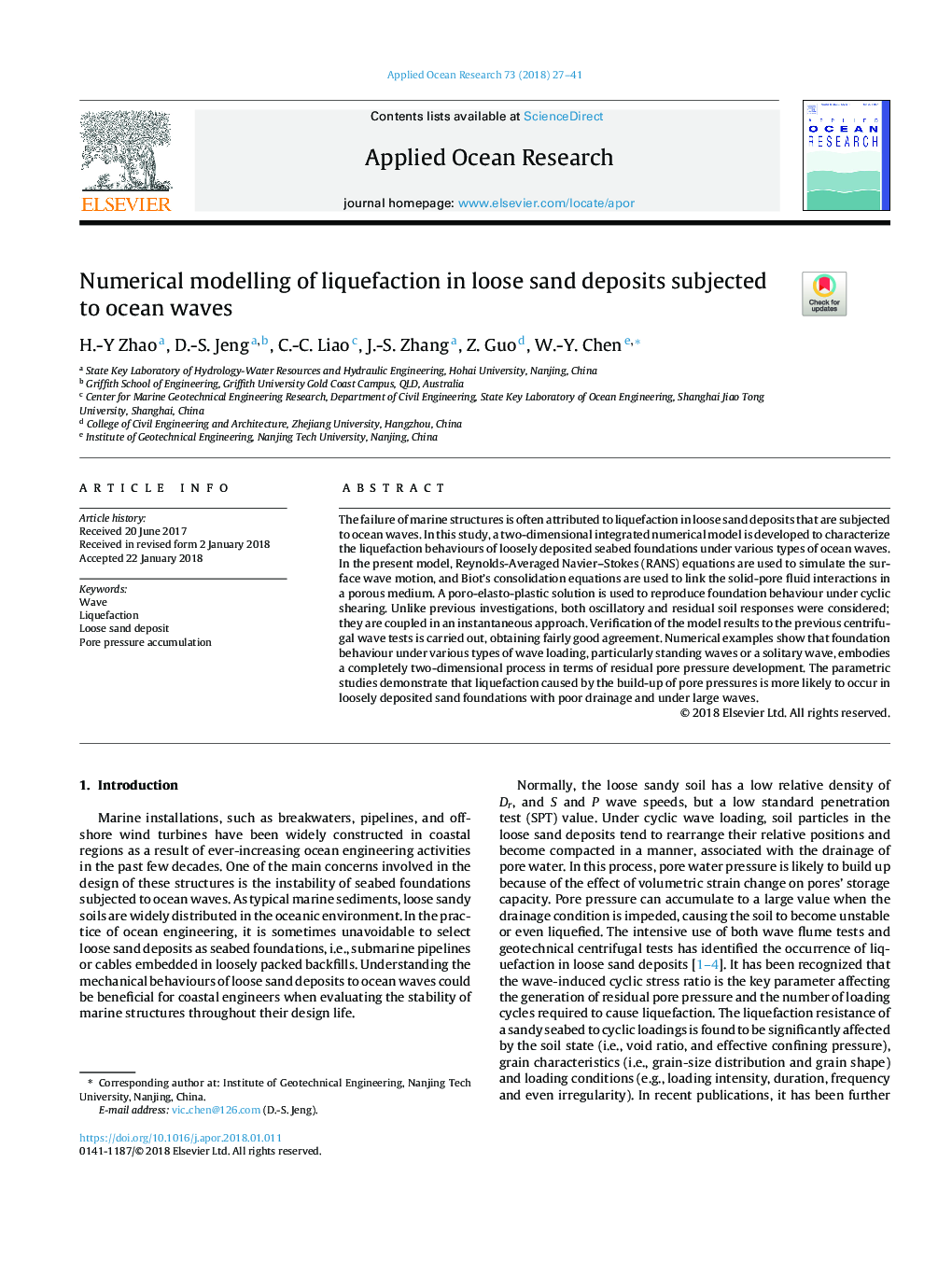| Article ID | Journal | Published Year | Pages | File Type |
|---|---|---|---|---|
| 8059300 | Applied Ocean Research | 2018 | 15 Pages |
Abstract
The failure of marine structures is often attributed to liquefaction in loose sand deposits that are subjected to ocean waves. In this study, a two-dimensional integrated numerical model is developed to characterize the liquefaction behaviours of loosely deposited seabed foundations under various types of ocean waves. In the present model, Reynolds-Averaged Navier-Stokes (RANS) equations are used to simulate the surface wave motion, and Biot's consolidation equations are used to link the solid-pore fluid interactions in a porous medium. A poro-elasto-plastic solution is used to reproduce foundation behaviour under cyclic shearing. Unlike previous investigations, both oscillatory and residual soil responses were considered; they are coupled in an instantaneous approach. Verification of the model results to the previous centrifugal wave tests is carried out, obtaining fairly good agreement. Numerical examples show that foundation behaviour under various types of wave loading, particularly standing waves or a solitary wave, embodies a completely two-dimensional process in terms of residual pore pressure development. The parametric studies demonstrate that liquefaction caused by the build-up of pore pressures is more likely to occur in loosely deposited sand foundations with poor drainage and under large waves.
Keywords
Related Topics
Physical Sciences and Engineering
Engineering
Ocean Engineering
Authors
H.-Y Zhao, D.-S. Jeng, C.-C. Liao, J.-S. Zhang, Z. Guo, W.-Y. Chen,
